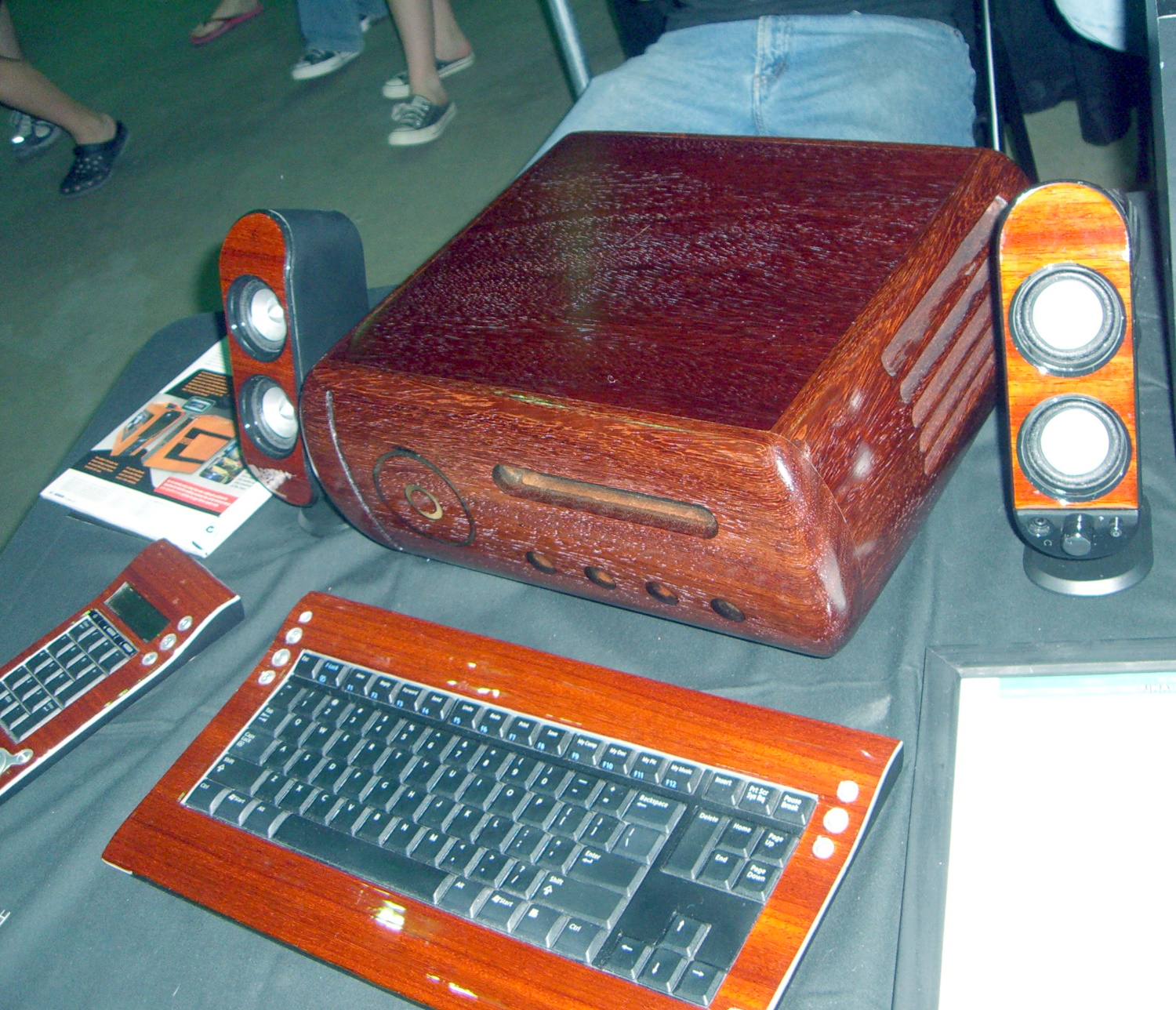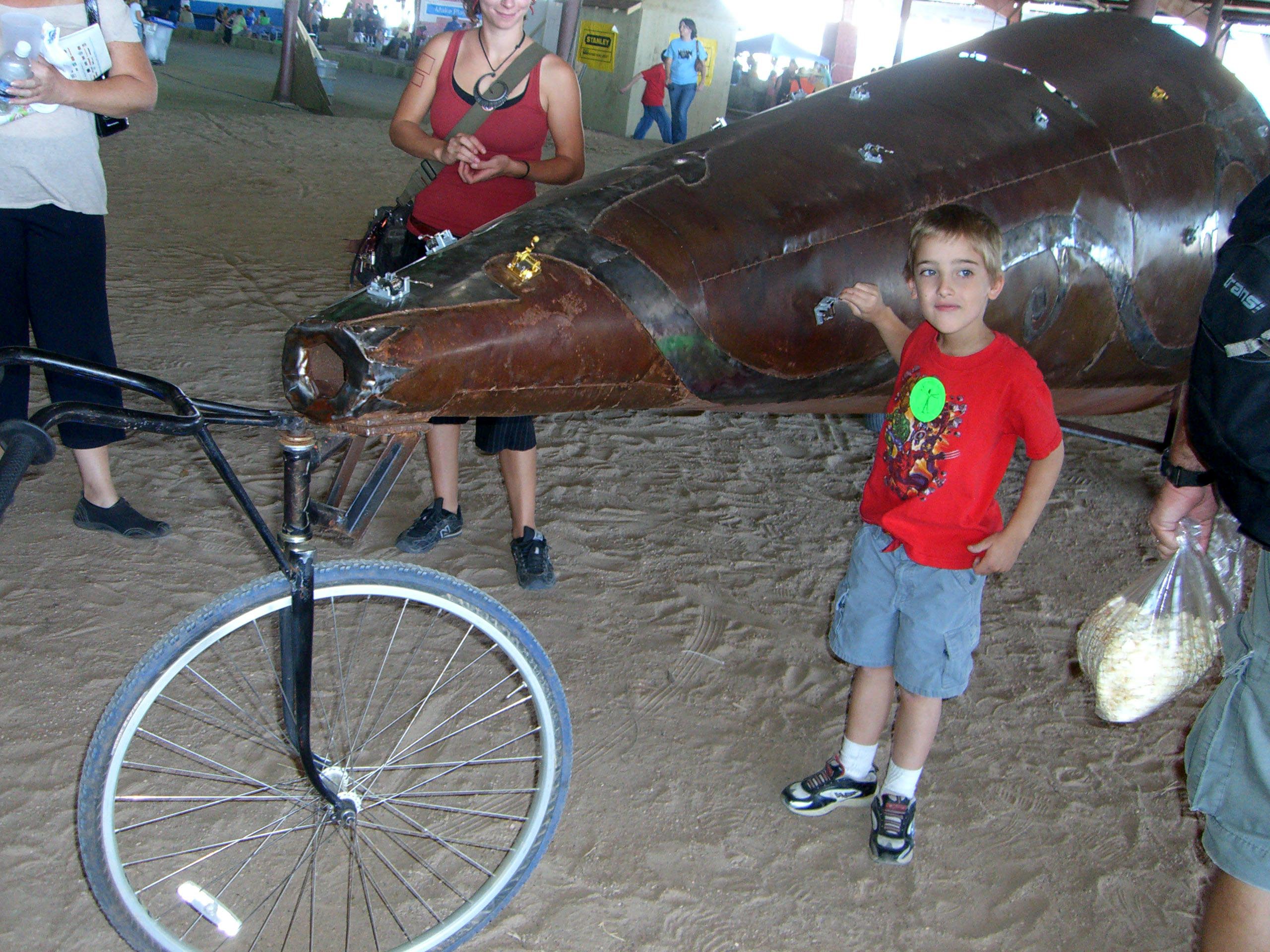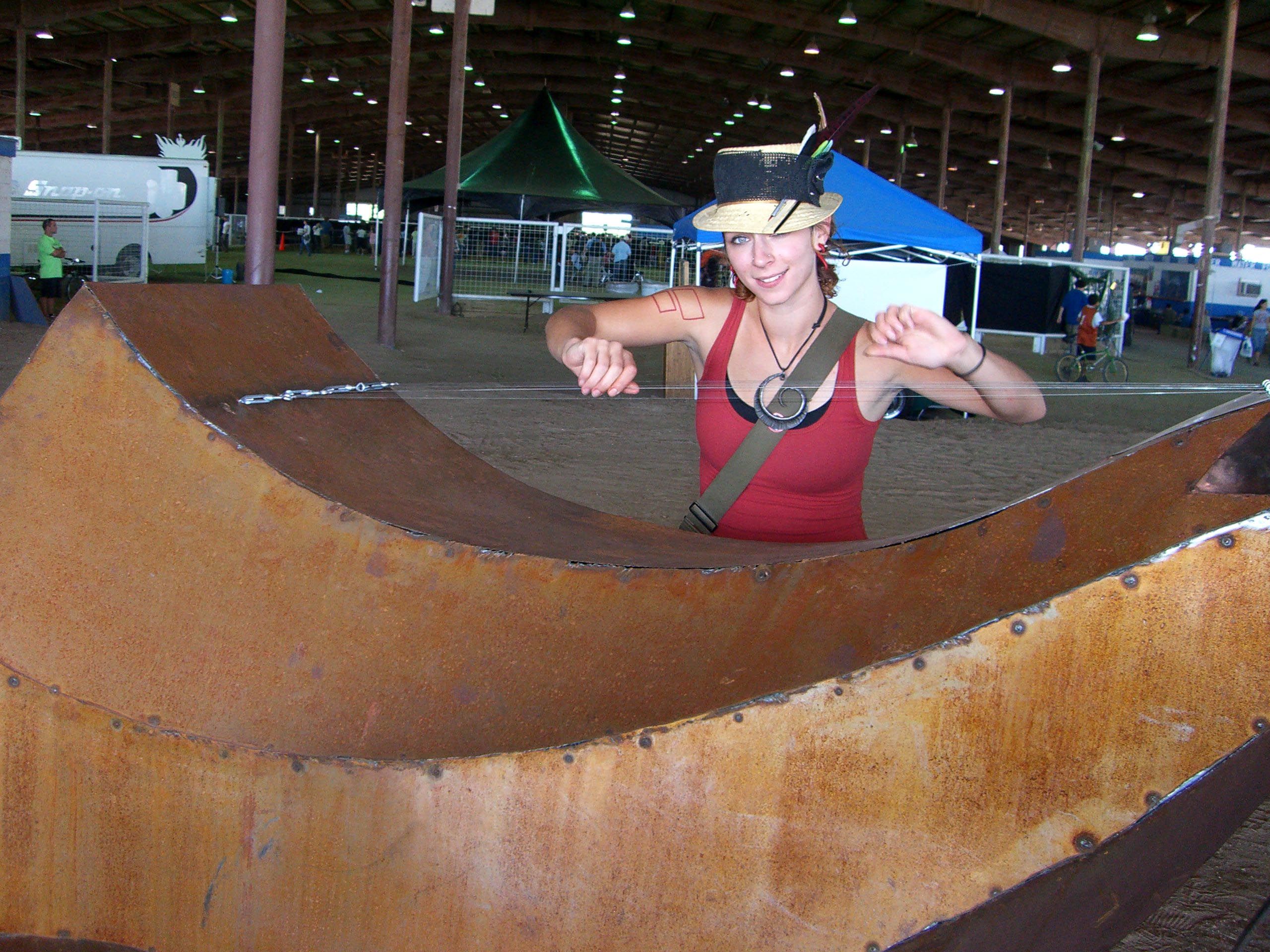Maker Faire 2007, Austin, Texas, part 2: art cars and bicycles, contraptions on wheels
This post is mainly dedicated to art cars and bicycles, and other less easily categorizeable contraptions on wheels. Those were among the most inventive and most beautiful things displayed at this Maker Faire.
But first I must mention some exhibits that fell short in both areas.
Many projects displayed at the Maker Faire 2007 showcased technology that was completely impractical. Not only that’s understandable — one could say that’s the whole point. Practicality wasn’t the goal there — artistic experimentation was.
But many of the projects were not just impractical, but based on ideas so simple that you kind of wondered what their whole point was.
One such example was the Tree of Secrets, which was a cardboard tree with microphones hanging off of it. You could speak your secrets into those microphones, and they would get recorded. Then you could play them back. I think you could also listen to other people’s secrets (which would make it a tree of no secrets). When the tree accumulates enough soundtracks, it starts mixing them up. So in any case it’s clear that your secret won’t stay a secret.
Another example was a dream recorder (?) that looked like an old, rusty voltmeter from a high school physics lab. You put it near your bed, and record your dreams in the morning. “Record” is too ambitious a word, though, because the only thing you can do with it is press one of the two buttons: “good” or “bad”. Also, if I remember correctly, it’s connected to the internet, and the needle on its face shows you the proportion of people who are having good dreams versus bad dreams. (Or maybe my subconscious made up this part as it tried really hard to find some meaning in this project.) Even so, this kind of dream evaluation could be shared only by people who have identical dream recorders near their beds. But… how many of them are there? Isn’t the dream recorder a one-of-a-kind thing, given that it was created by a graduate student as a course project?
Yes, both of these exhibits were created as course projects by students of a graduate program with some kind of… umm… trendy name, like Interactive Communications, or Interactive Media, or some such. I kinda felt sorry for those students. While I do remember having to do graduate course projects that seemed about as useful as shoveling sand from one pile to another (i.e. they did not involve original research, only reshuffling existing data), I still think they were more meaningful than, say, making a tree of secrets. But then, I’m not cut out to be an artist.
Here is a project where at least I understand where its esthetic appeal lies: the Real Wood iPod. Its creator rebuilt the exterior of his iPod in wood.

The same person, Joshua Driggs, also made wooden cases for other electronic equipment, such as a computer, speakers, and keyboards.

Cranky is a machine created by Dominique Vyborny. It has a bunch of little hand-cranked musical boxes in it.

Dominique Vyborny, Cranky’s author, cranks Cranky

Plucky is another instrument created by Dominique Vyborny, resembling a cross between a giant horn of an old phonograph, and a unicycle. It’s hard to see in this picture, but it has strings along its top.

Here, Dominique Vyborny plucks Plucky’s strings.

Here is a side view of Plucky

ZapCar, a three-wheeled car

ZapTruck, a three-wheeled truck

The RAVolt — Rob and Alex Hirchfeld. “See how you too can take a 1996 RAV4, some EV parts (including lead acid batteries) and just under $10K to create a vehicle that gets 30 miles range per charge.”
This is how RAVolt looks under the hood.

World’s fastest barstool by Bill Jenkins. I can’t say I see any resemblance to a barstool — maybe I need to go to bars more often?

A bike with chairs, made by Chalo Colina

A shiny red electric car

Three-wheel electric vehicle by Gary Krysztopik

A swan and butterfly bike(s) by Cycle Circus Austin. It’s hard to tell whether they are one thing or two separate machines. I don’t see where the pedals are on either swan or the butterfly, but maybe they are obscured by the wings.

The swan / butterfly bike(s) from the back. I can see that the swan has a bicycle seat between the wings, but those same wings obscure my ability to see into the back of the butterfly bike.

A tricycle — if the front thing wrapped in tinsel is a wheel, then it has three wheels — with a black-and-white mesh bubble, decorated with garlands of feathers, and, of course, the tinsel-wrapped front wheel.
This and some other bicycles and tricycles may or may not have been (my notes are not clear on that) part of Pedal Menagerie by Chalo Colina, who is “a native Austinite who has made his career in fine art, crafts, research and development, and machining”.

Recycle Cycle by Luke Iseman. “This electric motorcycle built out of an old rolling chasis cost under $2000 to build.” Though I’m sure that’s not literally duct tape, I wonder if this vehicle is deliberately designed to evoke the saying “held together by a duct tape”.

A fishtail bike, probably also by Cycle Circus Austin. This was my favorite art bike at Maker Faire.

A grasshopper (?) bike, probably also by Cycle Circus Austin.

Pink butterfly bike, probably also by Cycle Circus Austin

A bike with a dumpster attached to it

A snake car

A spiky dinosaur car

Morbid, but fascinating — a roach car.

People decorating a car at Maker Faire. This had something to do with Toyota’s Heya project.


A bicycle with a hinge in the middle.
“You really have to steer it two ways!” said the perplexed guy after making a few wobbly laps on this bicycle. Many people fell off trying to ride this bicycle. I guess it’s useful as a character-building exercise.

